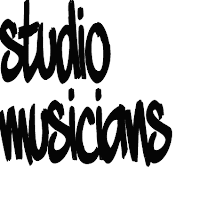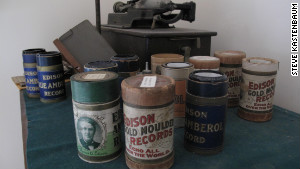- The gear you use on a gig won’t always translate to the studio. You choose the gear for a gig based upon versatility, durability and general ruggedness. The only thing that counts in the studio is the sound. While one size might fit all on a gig, it usually makes for a boring recording, especially if you’re recording multiple tracks or more than one song. The studio requires a wide range of sonic possibilities, so you’ll need to bring different guitars, amps and pedals to get there.
4. Leadership - On a gig you have a bandleader that calls the songs, counts them off, possibly may direct the solos, and ends the songs. In the studio you’re answering to a hierarchy consisting of the producer, artist, and engineer (in cases of sonics). The producer is the ultimate decision maker, with ultimate authority over everything you play.
5. Nuance - The little things count in the studio. Everything you play can be critical so nuances are just as important as the body of what you’re playing. When you play live the nuances are usually gone in the wind, overcome by the the stage volume, acoustics and attention of the players and audience. In the studio, everything you play is scrutinized and that’s too much pressure for some players. In the studio, you’ve got to be great every time, every take.
6. The Live ‘Feel” versus the Studio ‘”Feel” - Players well versed in both idioms tend to exhibit more finesse and restraint in the studio and cut loose in a different way. The studio requires the musician to play to a whole different set of variables created by the signal chain after the instrument and the needs of the session.
7. Etiquette - You can get away with being a jerk on a live gig since the other players usually will put up with you (up to a point) as long as you perform well or the audience loves you. Not so in the studio. If you make someone feel even slightly uncomfortable for any reason, chances are you probably won’t be asked back.
8. It’s hard work - That’s not to say that playing or singing on a 4 or 5 hour gig isn’t difficult, but you play a lot of different songs every set and get the glory of audience feedback. In the studio, the only feedback you get is from the producer, artist and maybe the engineer, and 99% of the time they’re analyzing how you can play a part better rather than singing your praises. And the level of concentration is definitely up a few notches. On a gig you can breeze through the music, almost losing yourself in your playing. In the studio, every note counts and requires your utmost attention.
9. Preparation - Live gigs almost always require sufficient rehearsal. Most recording sessions happen with little or no preparation. As a result, a session musician has to be highly adaptable and be able to learn music on the fly.
10. Approach - Studio musicians can be asked to change their approach in the middle of a take! Not so in a live performance.
11. Pace - Early in a session, studio musicians often hear, “We really like what you’re doing but we don’t like the sound. We’re going to change a few things in here.” Rarely, if ever, do live performances stop to tweak sounds, but it’s very common in any recording context for those on the production/engineering side of the glass to stop mid-take and say “You’re doing great but we have to fix a few things.” A session player needs to always be ready to move at the pace determined by the environment. Things may change on the fly from breakneck speed to time-crawling meticulousness.
12. Creation versus Interpretation - Live musicians are usually expected to re-create a pre-existing repertoire, where the studio cats create the repertoire.
13. The Required Skill Set - For rhythm section players, there’s a whole different level of musical literacy required. Not only should one be able to read music well, but the top session musicians can access a variety of styles and feels on a moment’s notice. It also takes a really good set of ears and musical taste buds to make it to the top of the session musician hierarchy.
14. Artist vs. Entertainer - Live musicians entertain, studio musicians create entertainment. It’s like the difference between going to see actors in a play and actors on the silver screen. Both achieve the same end, but theater changes from performance to performance while film is a one-time document meant to stand the test of time and to weather repeated exposures.
15. Venue Variables and Studio Situations - Live performance almost always presents the same circumstances for the musician. His or her instrument(s), collaborators, and set list (see Repertoire above) will usually not change much or without fair warning. Not so in the studio. Except for the great studio bands of the ‘60’s and ‘70’s, studio musicians are used to seeing new faces frequently, almost always play new material, and although the venues change, it’s not in the ways live venues do. The session musician learns to expect change at any moment since the tune can morph and he may be asked to play a different part or instrument.
16. The Live Wolf Pack and the Studio Lone Wolf - Most live performances require a group and a sizable supporting cast, unless you’re a DJ or a solo singer/songwriter. Recording musicians usually convene at a studio, arriving on their own, so a different camaraderie exists than the “We’re all together on this bus!”, mentality of live work. Recording musicians are independent and can work with different people every time they play music. Not usually so for the live players."






